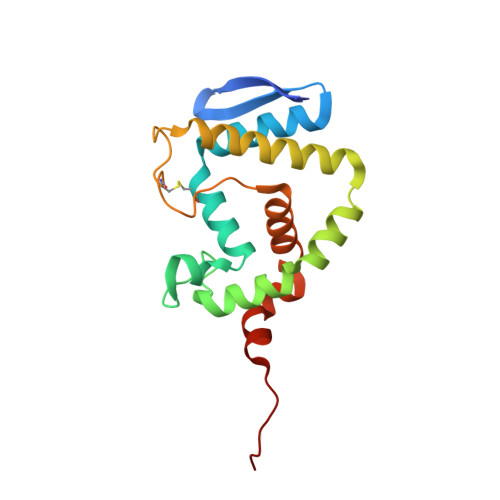Reducing Virulence of the Human Pathogen Burkholderia by Altering the Substrate Specificity of the Quorum-Quenching Acylase Pvdq
Koch, G., Nadal-Jimenez, P., Reis, C.R., Muntendam, R., Bokhove, M., Melillo, E., Dijkstra, B.W., Cool, R.H., Quax, W.J.(2014) Proc Natl Acad Sci U S A 111: 1568
- PubMed: 24474783
- DOI: https://doi.org/10.1073/pnas.1311263111
- Primary Citation of Related Structures:
4BTH - PubMed Abstract:
The use of enzymes to interfere with quorum sensing represents an attractive strategy to fight bacterial infections. We used PvdQ, an effective quorum-quenching enzyme from Pseudomonas aeruginosa, as a template to generate an acylase able to effectively hydrolyze C8-HSL, the major communication molecule produced by the Burkholderia species. We discovered that the combination of two single mutations leading to variant PvdQ(Lα146W,Fβ24Y) conferred high activity toward C8-HSL. Exogenous addition of PvdQ(Lα146W,Fβ24Y) dramatically decreased the amount of C8-HSL present in Burkholderia cenocepacia cultures and inhibited a quorum sensing-associated phenotype. The efficacy of this PvdQ variant to combat infections in vivo was further confirmed by its ability to rescue Galleria mellonella larvae upon infection, demonstrating its potential as an effective agent toward Burkholderia infections. Kinetic analysis of the enzymatic activities toward 3-oxo-C12-L-HSL and C8-L-HSL corroborated a substrate switch. This work demonstrates the effectiveness of quorum-quenching acylases as potential novel antimicrobial drugs. In addition, we demonstrate that their substrate range can be easily switched, thereby paving the way to selectively target only specific bacterial species inside a complex microbial community.
- Department of Pharmaceutical Biology, University of Groningen, 9713 AV, Groningen, The Netherlands.
Organizational Affiliation:


















